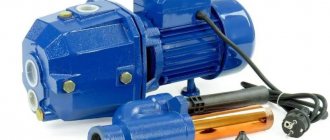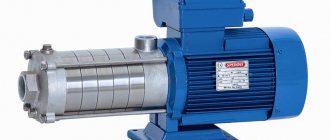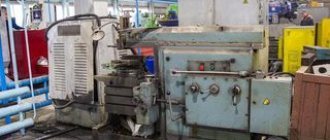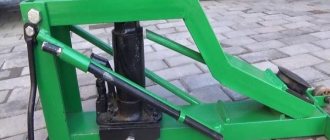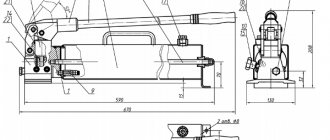Today, many people have heard about sandblasting, but few people fully understand how it all works. Although this method of surface treatment was invented quite a long time ago and is widely used in our time. This material will help you understand some of the intricacies of sandblasting. What does it consist of, how does it work, what pressure is needed to work? These and other issues are discussed in detail below. Particular attention is paid to the protection of the worker who uses the sandblasting machine. A few words have been said about the main parameters of sandblasting, which should be taken into account when choosing such equipment. An example of how to make a sandblasting machine with your own hands is also given.
Scope of sandblasting machines
You should start with the area where sandblasting is used. The most famous application of this processing method is for cleaning metal during body repair or when painting car rims. Devices for such processing have high pressure, with the help of which a sand jet removes the remains of old paint, soil, rust or scale from the metal surface.
Sandblasted metal lasts much longer after painting, largely due to the fact that such cleaning is better than other methods of removing metal coating. Small grains of sand cut into the surface being treated at high speed, thereby knocking down even those traces of corrosion that are located in small pores or cracks, where they are difficult to reach with traditional tools.
In addition to the quality of cleaning from old coating and traces of corrosion, sandblasting leaves behind a smoother surface. There are no scratches that occur after using brush cleaning, or using sandpaper with large abrasive particles. This makes it much easier to apply the first layer of primer and improves the quality of its adhesion to the metal.
In addition to body repair, sandblasting is widely used in other areas of human activity. This is how large ships, parts and products are cleaned in factories. In addition to metal, this processing method is also applicable to other types of materials, for example, for cleaning wood, brick or concrete products.
Sandblasting machines are used to create specific effects on wood or glass. Wooden products after processing can acquire all kinds of patterns. Sandblasting is used to frost glass, which is used for decorative purposes, for example, for engraving in the form of different patterns. Some sandblasting machines can be used to drill holes in glass, which can be round or other shapes.
Sandblasting glass
Matting is a very popular method of glass processing. Its main advantage: fingerprints are not visible on the surface of the material. With careful processing, such a level of roughness is achieved that the frosted glass does not collect dust and dirt.
Equipment for sandblasting glass operates according to the classical scheme. The abrasive, thrown at high speed from the nozzle of the gun (or a special head in automated devices), knocks out the smallest particles from the surface of the glass. As a result, it becomes rough and acquires a lower light transmittance.
Modern equipment for sandblasting glass is capable of:
- matt large areas or local, limited areas;
- work with mirrors, removing reflective amalgam;
- create patterns on the surface of the material.
A computer-controlled sandblasting machine for glass is capable of creating complex, multi-shade images. This is achieved by varying the number of times the head passes over individual areas of the picture. This frosting of glass can even be done on site at the customer’s place.
On a note! Mobile sandblasting on glass operates according to a hydraulic circuit. Purified water acts as the supporting body of the abrasive mixture. Frosting glass using this method does not create hazardous dust in the air, so it can be carried out in any room.
Sandblasting machine device
Any sandblasting machine consists of the following elements:
- a compressor that creates the required air flow pressure;
- storage receiver;
- a gun through which a stream of sand is directed onto the surface to be treated;
- container with sand or other abrasive material;
- automation and control system;
- connecting hoses.
The automation system is designed to control the pressure in the supply to the gun. There is also an automated compressor emergency shutdown system in case of problems in the work area. For example, when the work gun was accidentally released from the hands or in the event of a sandblaster falling.
The control system ensures that the compressor is turned on and off. Also, with its help, the equipment is switched to idle and operating modes. Sometimes it is located not only in the working area, but also in areas of additional sandblasting maintenance. For example, the equipment can be controlled by an assistant who monitors the level of sand in containers. He does this either independently or at the command of the sandblaster.
Connecting hoses are a very important element of sandblasting. The power and performance of the device depends on them. When selecting or manufacturing sandblasting hoses, the pressure they can withstand is taken into account. An equally important parameter is their diameter and internal resistance. The productivity and power of sandblasting is significantly affected by the length of the hoses.
What can you use, besides sand, to make your own sandblasting chamber?
In addition to sand, other types of consumables are suitable for operating the device:
- Nickel and cooper slag. Some of the most popular options for sandblasting, which are obtained from copper and nickel production waste. The cost is the same as treated sand, but they are stronger and harder.
- Steel and cast iron shot. Not only the most expensive option, but also the most durable. Used for quick but rough surface treatment.
- Pomegranate sand. Harder than ordinary sand, but just as fragile. It is expensive and rarely used for work.
- Glass and stainless steel shot. Sandblasting glass is mainly used for cleaning stainless steel surfaces.
- Electrocorundum. Solid crystalline form of aluminum oxide. Virtually undamaged and suitable for even the most contaminated surfaces.
Steel and cast iron shot is the most durable abrasive.
If you look at photos of sandblasting, you will notice that the chamber is a rectangular structure. Most often this is a box welded from a metal corner, which is lined with thin steel sheets up to 1 mm thick. To make it easier to control the amount of abrasive during operation, it is best to place a glass or plastic viewing window along the long side.
On the front wall of the chamber there are 2 symmetrical holes with a diameter of 100-120 mm, into which special thick gloves are inserted. It should be borne in mind that they will be constantly exposed to abrasive forces, so replacing these elements should not cause difficulties.
The bottom of the chamber is made of reinforced mesh, under which there is a trench for used abrasive. Comfortable work is ensured by lighting. To do this, just take 2 lamps of the required size. The sandblasting gun is placed inside the chamber, and air is supplied using a hose connected to the outside. Thus, the material will not fly out, which will make it possible to reuse it. In fact, this design option allows you to create a sandblasting gun with an abrasive recycling system.
On a note! If you plan to clean non-standard products of large shape, it is recommended to cover the side edges with a durable tarpaulin. To make the camera as convenient as possible, you should not do the work by eye - it is better to prepare a drawing first.
In addition to sand, nickel and cooper slag, garnet sand, glass and stainless steel shot, as well as electrocorundum are used.
Operating principle of sandblasting machine
The operating principle of sandblasting may vary slightly depending on the type, but most of them work as follows:
- the compressor creates air pressure that accumulates in the receiver;
- when the pressure required for sandblasting is created, the air flow is supplied to the gun;
- after air is supplied to the gun, a vacuum appears in it, which draws the abrasive substance from the container. Sand can also be forced into the gun;
- then the air-sand mixture is ejected from the gun with high acceleration and directed onto the surface to be treated.
Some sandblasters may work differently, but the operating principle described is the most common.
Types of compressors for sandblasting machines
It is worth saying a few words about compressors, with the help of which the pressure required in terms of power and performance is created. The most common of them are piston ones, since their power is sufficient for simple devices with low performance requirements.
There are also screw compressors. This type is considered more productive, which is why they are used where constant pressure with high performance is needed. Such compressors can work even with small storage receivers. Their performance is quite enough to provide pressure to the working gun in real time.
Main settings
Now a few words about the main parameters of compressors for sandblasting machines - power and performance. In this case, the first characteristic is measured in units of pressure that the compressor can create.
A device that can produce 9 atmospheres is considered more powerful than one that produces only 6 atmospheres. The optimal figure is considered to be 7-8 atm. Moreover, on the compressor, in the sandblasting machine and on the hose nozzle, the number varies depending on the size of the nozzle.
An important indicator for sandblasting compressors is their performance. This parameter shows the amount of compressed air that the device can produce in a certain period of time. Capacity is usually measured in liters of air per minute. Accordingly, the volume of sand that can be supplied to the working area per unit of time directly depends on this value.
Other parameters of compressors are considered secondary, and therefore, when choosing equipment, they are not particularly paid attention to. These include the power consumption of the electric motor, uninterrupted operation time, and the number of revolutions per minute. The power and productivity of sandblasting also depend on these parameters, however, when choosing, they still focus on the main indicators.
Popular models of compressors for sandblasting are presented on the market by such certified brands as Abac, Berg, ChKZ, Ceccato, Atmos, Remeza, Alup, Kaeser, Fini, ZIF.
How to make sandblasting with your own hands from a gas cylinder
On the Internet you can find a large number of “Do it yourself sandblasting” videos that show how to make devices from a gas cylinder. It is this version of the design that is considered not only durable, but also reliable. It is important to follow the instructions while working to avoid accidents. For manufacturing you will need to use the following parts:
- propane or freon gas cylinder;
- powerful compressor with a capacity of at least 500 l/min and a power of 3 kW;
- ball valves that regulate the supply of air and abrasive sand;
- a fragment of a steel water pipe with a thread and a plug, which will be used as a funnel for sand, the optimal diameter is 2 inches;
- tee with thread marked “DU 15”;
- two-meter rubber sleeve with a diameter of 14 mm;
- hose with a cross-section of 10 mm and a length of at least 5 meters;
- 5-meter gas hose, the diameter of which is 10 mm;
- clamps and fittings for hoses, it is better to take extra;
- nozzle;
- sandblasting nozzle for compressor;
- fum tape for reliable sealing and compaction of docking units.
Sandblasting devices made from a gas cylinder are considered not only durable, but also reliable.
The nozzle, as already mentioned, can be purchased or made independently from a car spark plug or a metal rod. The main thing is to remember that 80% of the convenience and quality of work will depend on this detail: it is thanks to the nozzle in the sandblast that the necessary pressure is ensured.
In short, to make a nozzle you will need a piece of metal rod 3 cm long and 1 cm in diameter. The first 2 centimeters of length are bored to 2.5 mm, the remaining piece should have a larger diameter - approximately 6-6.5 mm.
Features and characteristics of the pistol
For a pistol, the main parameters are:
- its performance;
- operating pressure;
- nozzle diameter;
- method of capturing an abrasive composition.
All of these characteristics, except the last one, depend proportionally on the compressor and the design features of the gun itself.
For example, with a larger nozzle diameter, the gun's performance will be greater. However, at the same pressure values, a nozzle with a larger diameter will have a lower jet power. This means that a larger amount of sand will be supplied, but its acceleration speed will be lower.
These parameters are selected depending on the task facing sandblasting. For example, when processing brick or concrete walls, wood products and so on, less jet power is required, while productivity is needed as much as possible. But when processing glass, metal and other hard surfaces, a jet with high acceleration is needed.
Hydrosandblasting
Hydrosandblasting can be carried out regularly in a normal garage or on-site environment, also using regular PPE. The bodies of old cars, after cleaning with hydrosandblasting, are quite suitable for painting; distance of the site or workshop from the above objects - from 50 m. Hydrosand jet is used without a compressor from a portable car wash or a household “sprinkler” for windows and display cases. Therefore, special attention should be paid to hydrosandblasting.
The design diagram of a hydrosandblasting installation driven by a portable washing machine is shown on the left in the figure:
Diagram of a hydrosandblasting installation and a simple nozzle for hydrosandblasting
A drawing of a simple nozzle made from parts of a water supply system for hydrosandblasting is on the right; The inset shows its appearance. The operating principle is ejection. However, such a nozzle works with some washers, but not with others, and the limits for adjusting the jet density and abrasive flow rate with a suitable drive are insufficient. The reason is the oblique concentrated supply of the abrasive-air mixture to the ejector.
The nozzle with coaxial supply of water and abrasive-air mixture works stably with any car and household washing installations. For example, the nozzle, the drawings of which are shown in Fig., was originally developed for the Kärcher car wash. But it is also suitable for any other thread with a standard G1/4” tip. And if the standard fit is different, then it is enough to make a connecting socket for it (see item 1).
Drawings of a universal hydrosandblasting nozzle for portable washers
Note: boron carbide nozzle insert (item 4) is a ready-made purchase item. Can be replaced by another, straight or Venturi; in this case, the diameter of its narrowing (“neck” of the Venturi nozzle is 4.5-6 mm).
How to make a hydrosandblasting nozzle for a portable car wash, see also the video:
Personal protection for sandblaster
When working with sandblasting machines, special attention is paid to the individual protection of the sandblaster. This type of material processing poses several dangers to human health.
The first of them is grains of sand flying out at very high speeds, which can reach 700 kilometers per hour. Many particles ricochet off the surface being treated, which can cause serious injury to the skin. To protect yourself from their effects, you must use the following personal protective equipment:
- special shoes;
- overalls made of durable material;
- leather gloves;
- protective helmet.
Sand dust and other particles knocked off the surface being treated have a negative effect on the respiratory system. To protect against this harm, the sandblasting helmet is equipped with an independent air source. Air usually comes from outside the work shop and is forced into the helmet for breathing. Sometimes self-contained air supply systems are used, similar to those used by scuba divers.
Well, the last, no less dangerous source of harm to health is noise. Its creation involves a rather loud compressor, a whistling stream of compressed air and the noise of sand hitting the surface being treated. If you remain under the influence of all these noises for a long time, you can very quickly get injured in your hearing aid. To protect against excess noise, special sound-absorbing headphones are used, mounted in the sandblaster’s helmet.
DIY Tricks
The sandblasting apparatus is technically simple in general, but due to the difficult working conditions - under considerable pressure, in an aggressive environment - its design and manufacture is a rather complex task. Do-it-yourselfers sometimes overcome the difficulties that arise in this case in rather ingenious ways. That's why they are craftsmen, after all.
Bunker from a cylinder
The consumption of abrasive for all types of sandblasting work, except artistic polishing, is very high. A household gas cylinder or, say, a car receiver, these are vessels of sufficiently large capacity, designed to work under pressure and are almost not subject to operational wear. It is easier to insert a simple tip with a nozzle into the sandblasting chamber, and it is easier to operate it with thick rubber gloves than with a gun. Therefore, many hobbyists make their own sandblasters with an abrasive hopper from a gas cylinder.
How to properly make sandblasting from a gas cylinder or plastic bottle
However, if you simply convert the cylinder into a sandblasting hopper in pressurized mode (item 1 in the figure), then an unpleasant phenomenon is immediately discovered in the work: the powder in the hopper is still half or a third full, and the installation begins to snort and spit clouds of dust instead of do your thing. The reason is the sucking of air through the abrasive in the hopper, pos. 2. You can avoid it by quickly adjusting the boost, but this is no longer a job, but a chore. Therefore, it is better not to be lazy right away, cut off the top of the cylinder (which will now be the bottom of the hopper) and instead weld on an abrasive sealing cone made of galvanized steel from 0.6 mm, pos. 3. There will be no suction even with a primitive mixer made from a straight water tee, pos. 3b.
The author’s find of a mini-sandblaster with a hopper made from a plastic bottle, pos. 4. Spiral ribs on the high neck of the bottle slightly, but they swirl the flow of sand even before it enters the mixer. This equally primitive sandblasting tool, based on what appears to be an inexpensive universal working pneumatic gun, is certainly suitable for very delicate work.
Sandblasting weapon
A sandblasting gun is convenient for cleaning large surfaces for painting, for example. bodies of used cars, so they are sold out well, and amateurs adapt paint or universal working pneumatic guns for sandblasting. Most often - according to the gravitational injection scheme; less often - according to the scheme with lower boost. Some people are not too lazy to make analogues of industrial designs, see, for example, video:
Industrial samples of high-quality sandblasting guns are made using a pneumatic ejection scheme - ejection sandblasting consumes a minimum of abrasive and, accordingly, least dusty. Instead of a hopper, the abrasive for them is poured into a plastic bag without the slightest holes. The intake device is a piece of rigid pipe tightly inserted into the supply end of the abrasive air hose. The neck of the bag with abrasive is tightly tied around the intake pipe - and atmospheric pressure helps ejection well, compressing the bag as the powder is consumed.
The range of factory-made sandblasting guns (on the left in the figure) on sale is quite wide. On Alibaba, etc. Sandblasting nozzles for working pneumatic guns are on sale in the center. If you choose, then for general work choose ejection ones as they are the safest and consume less abrasive per square of the surface being treated than others. For fine and artistic work, a gun or a nozzle with lower pressure is more suitable, see above, but these are more expensive.
Sandblasting gun, sandblasting nozzles for working pneumatic guns and a homemade ejection sandblasting nozzle from plumbing parts
The same Chinese are also selling sandblasting nozzles with standard plumbing threads. An ejection abrasive blasting nozzle for such a nozzle can be made from parts of a water supply system; joints must be sealed with FUM tape, on the right in Fig. This sandblaster will not last long, but it is suitable for occasional use over small areas.
However, in any case, do not forget - we are talking about your health in the distant and not so distant future. Therefore, work only on a site that is at least 150 m away from residential buildings, poultry and livestock farms, cultural plantings, water points, parks and forests. The nearest children's or sports facility, playground or sports ground or pond must be at least 500 meters away. m. The influence of abrasive dust depends not only on its type and concentration, but also on the time of exposure. If it does not exceed 2-3 hours a day in portions of 15-20 minutes with breaks of 5-10 minutes, then on the site it is possible to do without full ammunition, but lightweight equipment is still needed:
- A soft, supercharged helmet with a cape, or, better yet, a gas mask and a head cape with a gorget that protects the neck and shoulders, such as those used by builders and concrete workers;
- One-piece overalls made of dust-proof fabric or a robe made of trousers with a belt and a jacket with a hem with a tight elastic band;
- Cuffs of sleeves and trousers - with rubber cuffs with a width of 7 cm;
- Combat boots (must go with untucked trousers!).
Note: when working with sandblasting irregularly for no more than 20 minutes a day, you can use a helmet with a non-supercharged cape and a petal respirator to protect the respiratory system.
Room for working with a sandblasting machine
When working with a sandblasting machine, it is a good idea to take care of creating the necessary conditions in the workroom. The main enemy of sandblasting is excess moisture, since when sandblasting is carried out, productivity can be significantly affected by its humidity. Therefore, first of all, care is taken to remove excess moisture from the room. Also for this purpose, professional sandblasting machines are equipped with air dryers, which is taken and supplied from the compressor to the working gun.
An equally important factor is the purity of the air from impurities. In addition to cleaning it in the workroom, filtration is used directly in the devices. The suction flow is cleared of oil and other impurities, which ensures better mixing with sand and supply to the working area.
Also, the sandblasting chamber should be able to be easily cleaned of sand residues. If you work with sandblasting at an amateur level, then you should choose a room for this where the sand will not interfere. After all, it will be very difficult to completely remove it. It is best to equip a special sealed chamber for this work and use it only for these purposes.
Sandblasting wood
Wood is a rather fragile material. Even with a long period of use, the surface of a log or board is destroyed. Local areas of rotting, delamination, and drying out form. A house made of logs or decorated with wooden elements begins to look unaesthetic. The same can be said about many products made from popular natural materials.
Sandblasting wood can restore the original appearance of walls or parts. Wherein:
- just a huge amount of dust is released;
- operation is noisy;
- a large amount of garbage remains.
Advice! If sandblasting of a log house is planned, it is recommended to hire specialists to carry out such work. They have experience in choosing the abrasive fraction to achieve a high-quality final result and high productivity. Professionals use good sandblasting equipment.
Cleaning the wood surface with abrasive can be carried out:
- to restore (restorate) the surface of the material, remove traces of rotting, drying, color changes;
- to prepare wood for the application of antiseptics or paints and varnishes.
Separately, it is worth considering sandblasting woodworking work such as blanching. This is an operation as a result of which the material is artificially aged, the appearance of rough processing is formed, and the texture appears. When working in art workshops, to protect against the release of large amounts of dust, blanching is performed in small sealed chambers equipped with ventilation units.
When sandblasting wood, fairly soft abrasives with a high soda content are used. In this way, high environmental safety of the treated surface is achieved. In addition, soda does not affect the color of wood or texture in any way, and can even be used during restoration work after fires.

